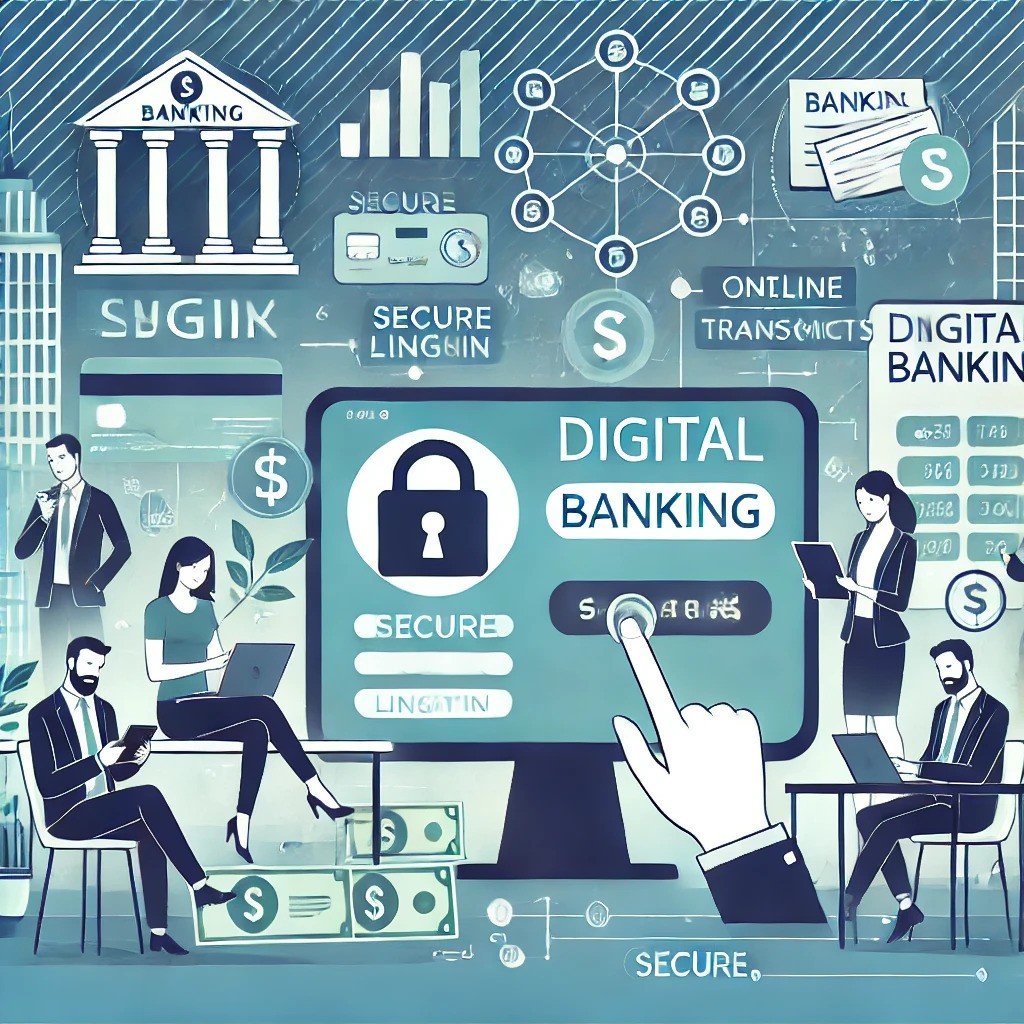In recent years, digital banking has revolutionized the financial industry, offering unprecedented convenience, accessibility, and efficiency. As technology continues to advance, more people are turning to digital banking solutions to manage their finances. This article explores the evolution of digital banking, its benefits, challenges, and the future of financial services in a digital world.
Understanding Digital Banking
What is Digital Banking?
Digital banking refers to the digitization of all traditional banking activities and services that historically were only available to customers when physically inside a bank branch. This includes activities like money deposits, withdrawals, transfers, checking/savings account management, applying for financial products, loan management, and more.
Evolution of Digital Banking
Digital banking has evolved significantly over the past few decades. Initially, it started with the advent of ATMs and credit cards, followed by online banking in the late 1990s. Today, with the proliferation of smartphones and the internet, mobile banking apps and digital wallets have become the norm, offering a seamless banking experience.
Benefits of Digital Banking
Convenience and Accessibility
One of the primary advantages of digital banking is the convenience it offers. Customers can perform banking transactions from anywhere at any time without the need to visit a physical branch. This accessibility is particularly beneficial for individuals in remote areas or those with mobility issues.
Enhanced Security
Digital banking platforms invest heavily in security measures to protect customer data and transactions. Features like biometric authentication, two-factor authentication, and encryption ensure that banking activities are secure and that personal information is safeguarded.
Cost Efficiency
Digital banking reduces the need for physical branches and associated costs, such as maintenance and staffing. These savings are often passed on to customers in the form of lower fees and better interest rates on savings accounts and loans.
Real-Time Monitoring
With digital banking, customers can monitor their accounts in real time. Instant notifications for transactions, balance updates, and alerts for suspicious activities help customers stay informed and manage their finances more effectively.
Financial Management Tools
Many digital banking platforms offer tools and features to help customers manage their finances better. These include budgeting tools, expense tracking, financial goal setting, and personalized financial advice.
Challenges of Digital Banking
Cybersecurity Threats
Despite the enhanced security measures, digital is not immune to cybersecurity threats. Hackers and cybercriminals constantly seek ways to breach security protocols, making it essential for banks to stay ahead with the latest security technologies.
Digital Divide
Not everyone has access to the internet or smartphones, creating a digital divide. While banking offers numerous benefits, it can also exclude those without access to necessary technology or digital literacy.
Regulatory Compliance
Digital banking platforms must comply with stringent regulations to protect customer data and ensure financial stability. Keeping up with evolving regulations can be challenging and require significant resources.
Customer Trust
Building and maintaining customer trust in digital banking services is crucial. Any security breach or service disruption can significantly impact customer confidence and the bank’s reputation.
The Future of Digital Banking
Artificial Intelligence and Machine Learning
Artificial intelligence (AI) and machine learning (ML) are set to play a significant role in the future. These technologies can enhance customer service through chatbots and virtual assistants, provide personalized financial advice, and detect fraudulent activities more effectively.
Blockchain Technology
Blockchain technology has the potential to revolutionize banking by providing a more secure and transparent way to conduct transactions. It can help reduce fraud, streamline cross-border payments, and ensure the integrity of financial records.
Open Banking
Open banking allows third-party developers to build applications and services around financial institutions. This can lead to more innovative financial products and services, increased competition, and better customer experiences.
Biometric Authentication
The use of biometric authentication methods, such as facial recognition, fingerprint scanning, and voice recognition, is expected to increase. These methods offer enhanced security and a more convenient way for customers to access their accounts.
Personalized Banking
As continues to evolve, personalized banking experiences will become more prevalent. Banks will leverage data analytics to offer customized financial products and services based on individual customer needs and preferences.
Adopting Digital Banking
Choosing the Right Digital Bank
When selecting a digital bank, it is important to consider factors such as security, ease of use, customer service, and the range of services offered. Researching and comparing different platforms can help you find the one that best meets your needs.
Setting Up Your Account
Setting up a digital account is usually a straightforward process. It typically involves downloading the bank’s app, providing some personal information, and verifying your identity. Once your account is set up, you can start managing your finances digitally.
Using Digital Banking Safely
To use digital safely, follow these best practices:

- Use Strong Passwords: Create complex passwords that are difficult to guess and change them regularly.
- Enable Two-Factor Authentication: This adds an extra layer of security by requiring a second form of verification.
- Monitor Your Accounts: Regularly check your account statements and transaction history for any suspicious activity.
- Update Software: Keep your banking app and device software up to date to protect against security vulnerabilities.
- Be Wary of Phishing Scams: Avoid clicking on suspicious links or providing personal information in response to unsolicited messages.
Conclusion
Digital banking has transformed the financial services industry, offering unparalleled convenience, security, and efficiency. While it presents certain challenges, the benefits far outweigh the drawbacks, making it an attractive option for managing finances. As technology continues to advance, digital banking will undoubtedly play an increasingly important role in our daily lives, shaping the future of financial services. Embrace the world of digital banking and experience the many advantages it has to offer.
